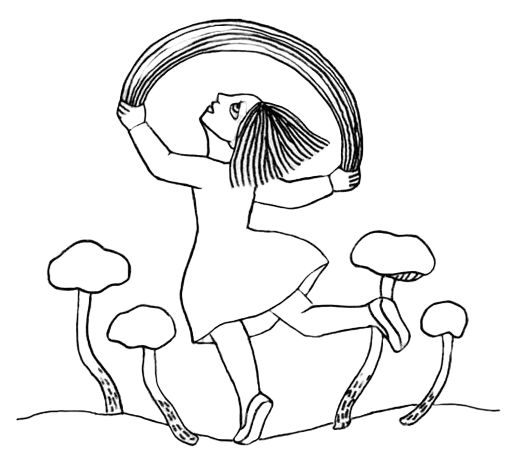1 July 2025, Kobe
I visited the back side of Mt. Rokko. Although traces of last week’s heavy rain remained, the ground was already beginning to dry out. Some Amanita mushrooms had started to emerge, but overall fungal growth was still sparse.
Among the entomopathogenic fungi, the two Gibellula specimens I’ve been observing showed near full maturity. Aside from that, only Torrubiella superficialis (yellow scale insect fungus) was found. Due to the intense heat, I cut the visit short after checking just one location.
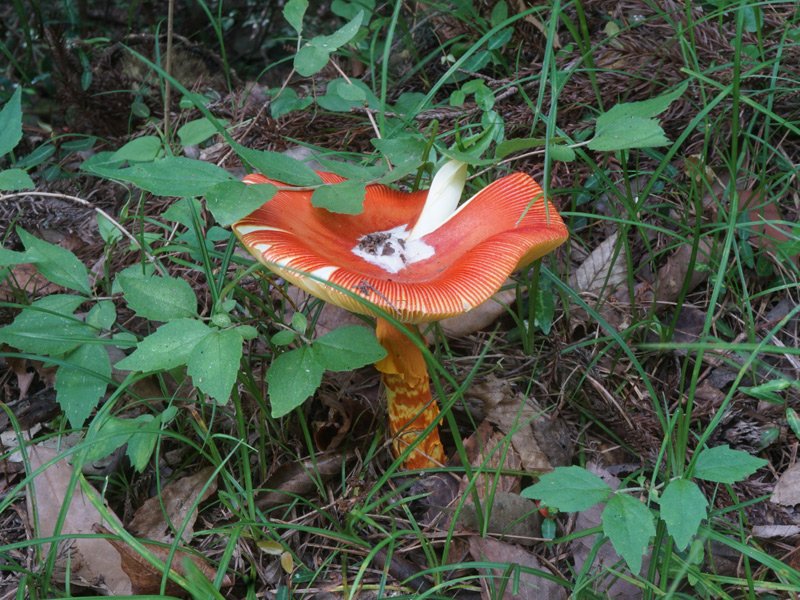

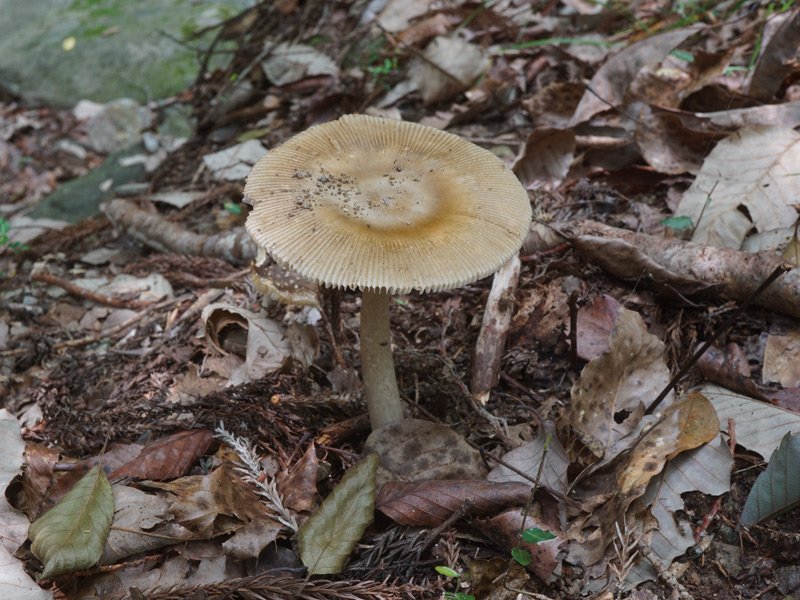
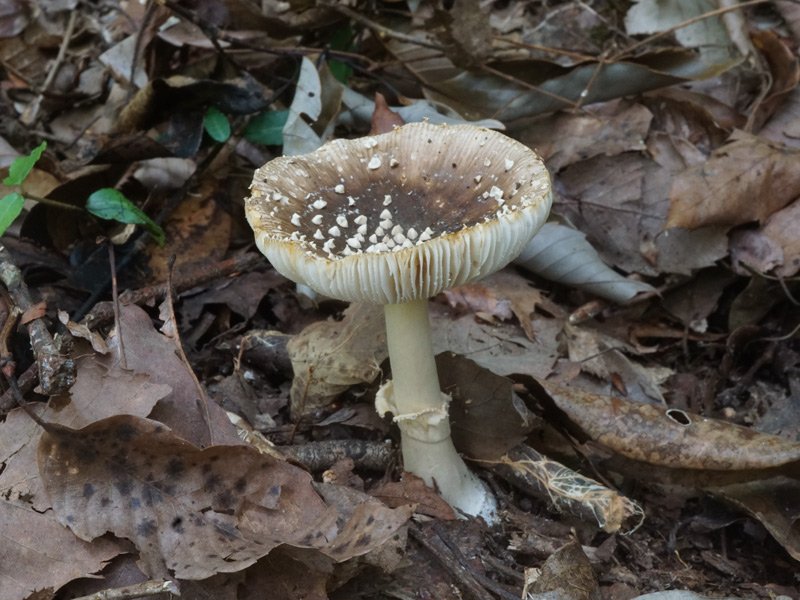
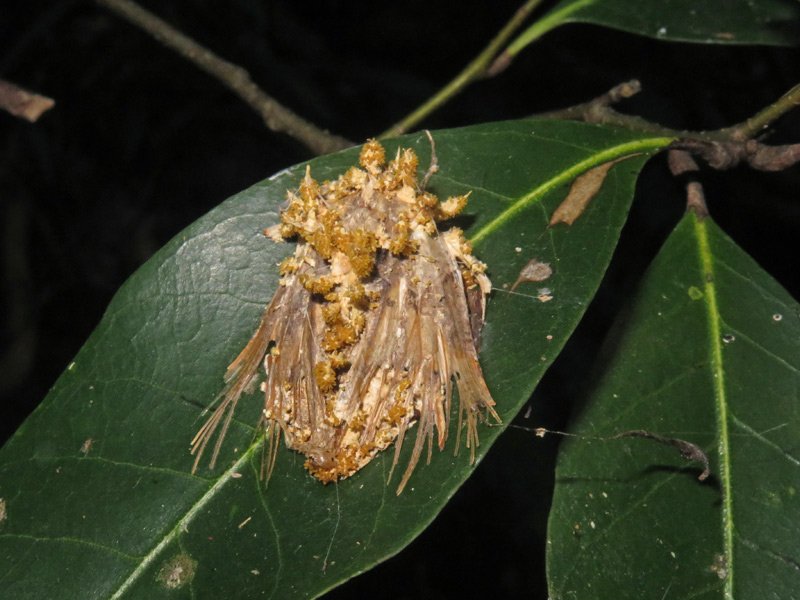
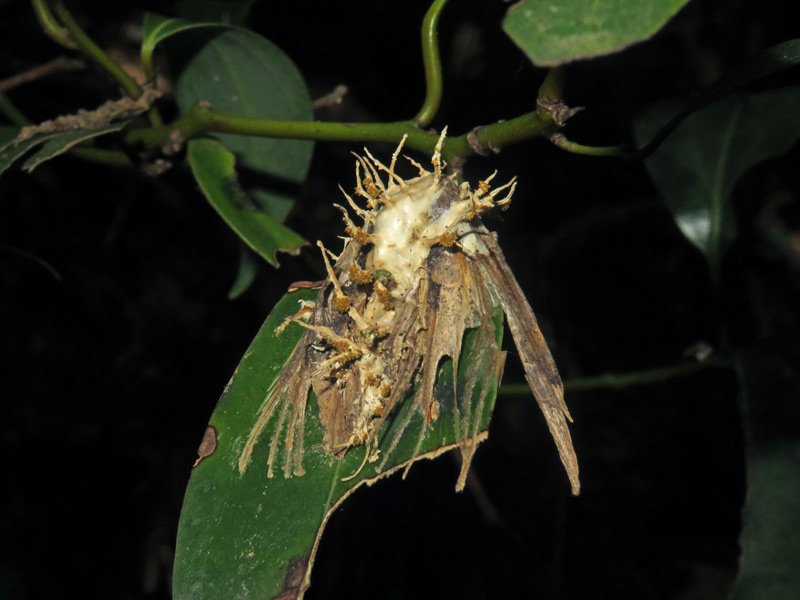
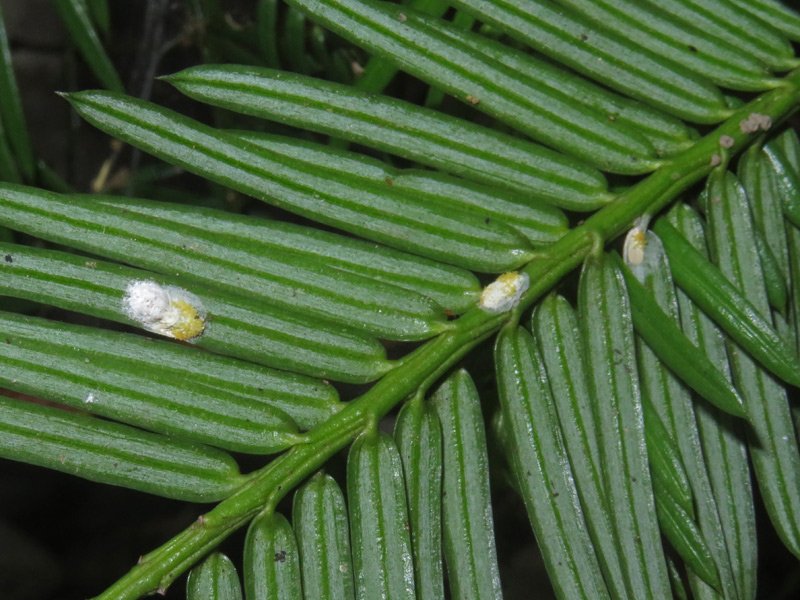
30 June 2025, Kobe
An anamorphic fungus was found on a moth cocoon on June 25 at the Phallus indusiatus site. Two specimens were collected for rearing. As conidia began to develop, I examined them under the microscope. Judging by the morphology of the conidia, it appears to be Cordyceps farinosa, but I was unable to identify any metulae or phialides despite thorough observation. This may be due to immaturity, so for now I am noting it as an anamorph of Cordyceps sp.
The other specimen I brought back turned out to be secondarily parasitized by Phellodon niger. The spiny structures are perithecia, from which the asci emerge at the tips.
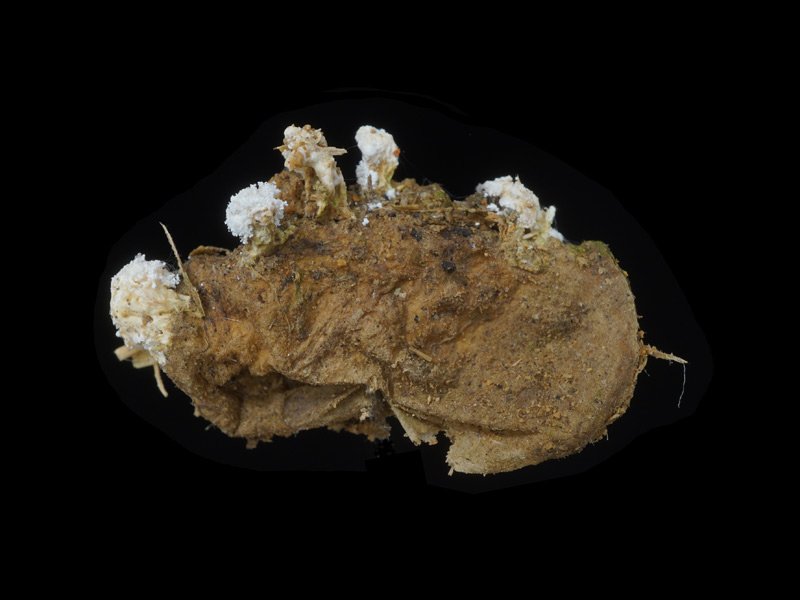
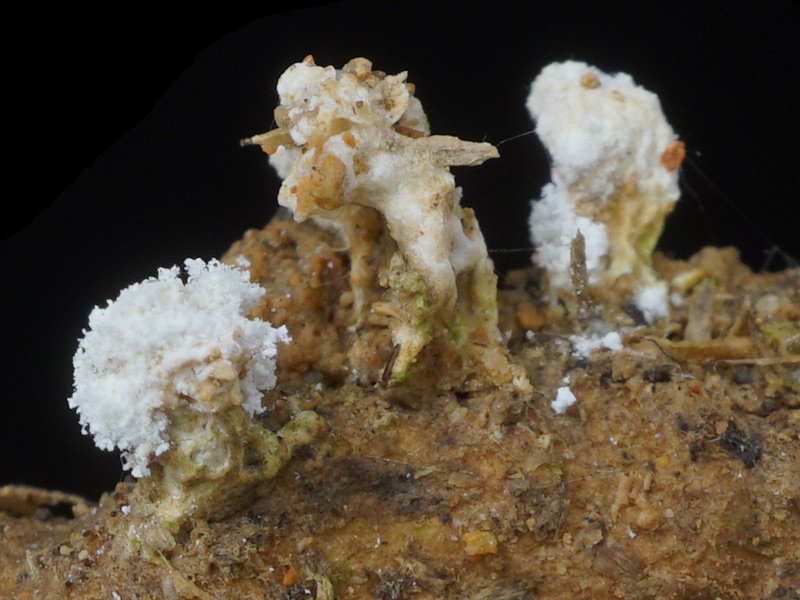
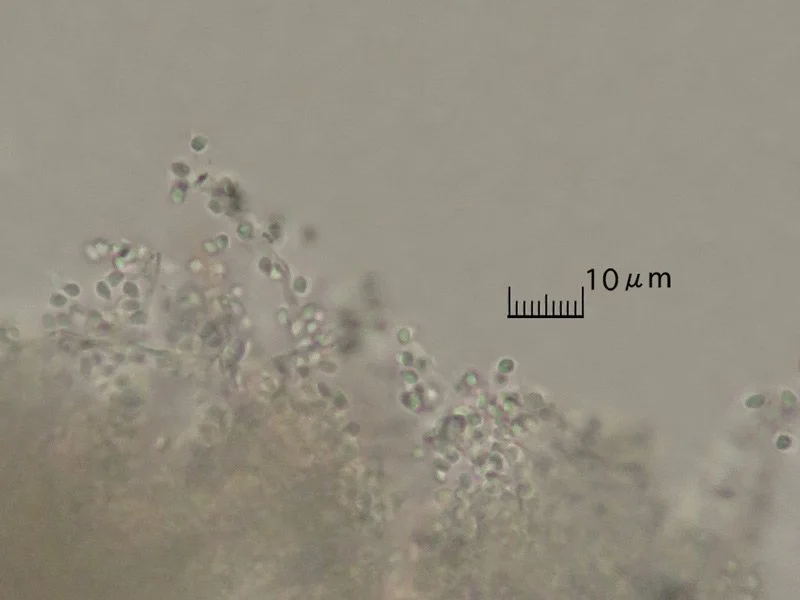
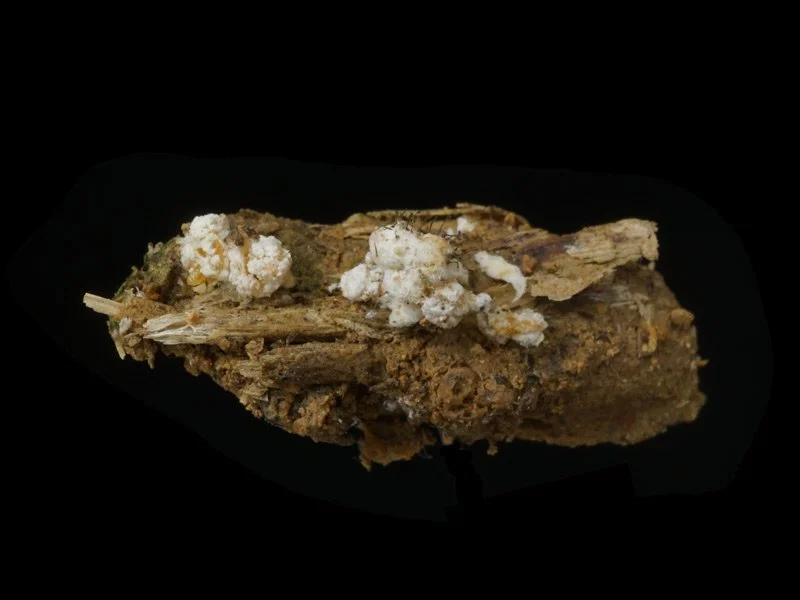
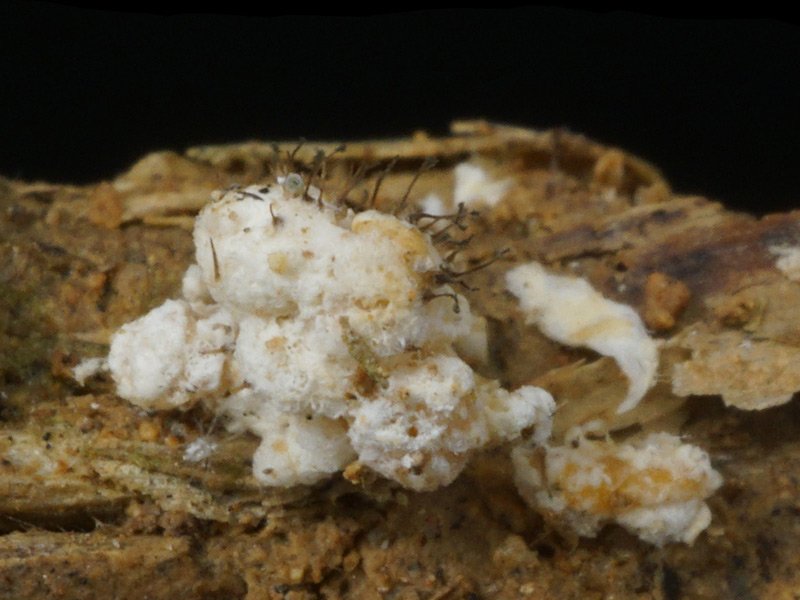
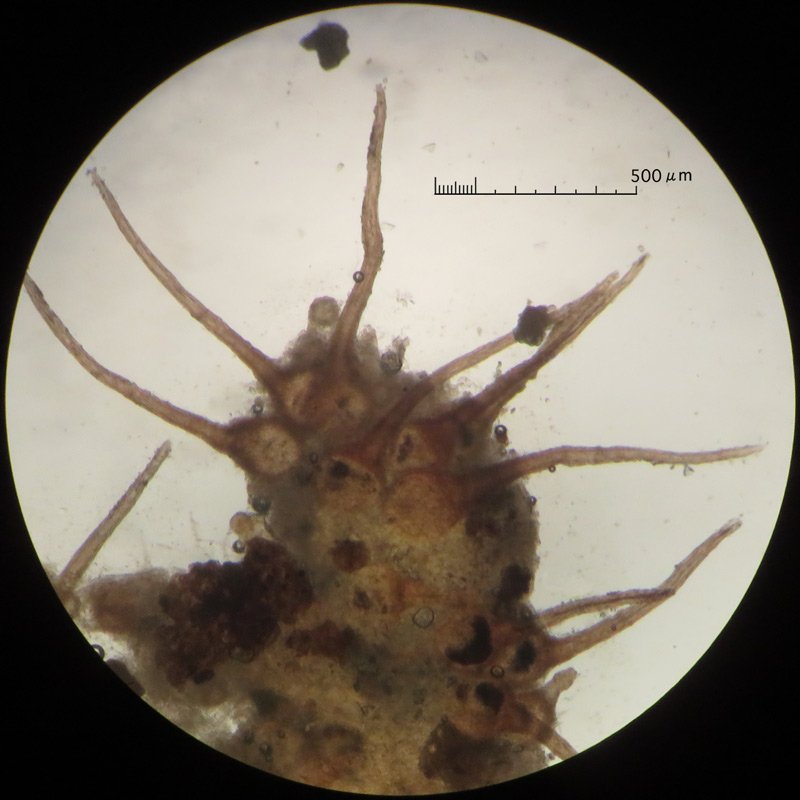
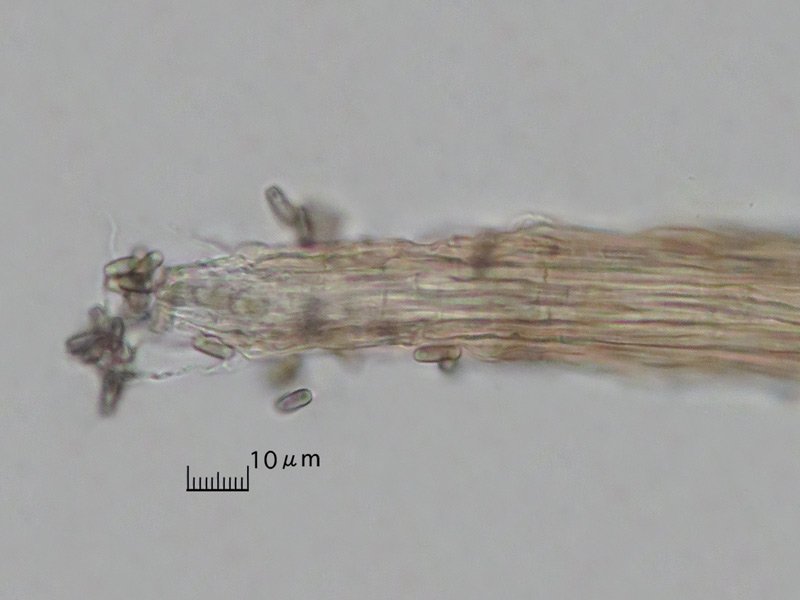
25 June 2025, Kobe
The day after a heavy rain, with a forecast of cloudy weather, I went to look for Phallus indusiatus (veiled lady mushroom). As expected, many had emerged, but most were either toppled over or badly damaged by the rain, and only a few were still in good condition.
On the embankment surrounding the bamboo grove where the veiled ladies grow, I found what appeared to be a small Cordyceps resembling Cordyceps pruinosa. Looking around, I noticed dozens more of the same kind. Small moths were visible all around the area, which may suggest they are the host species.
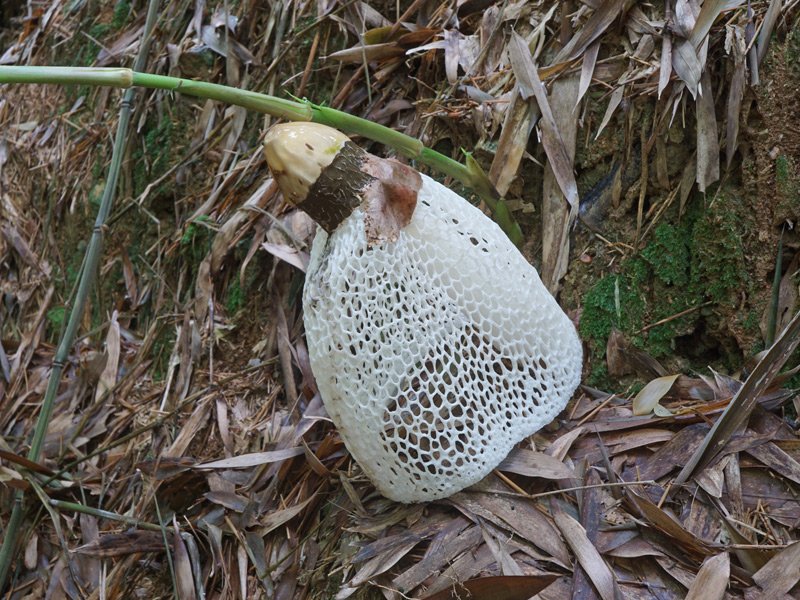
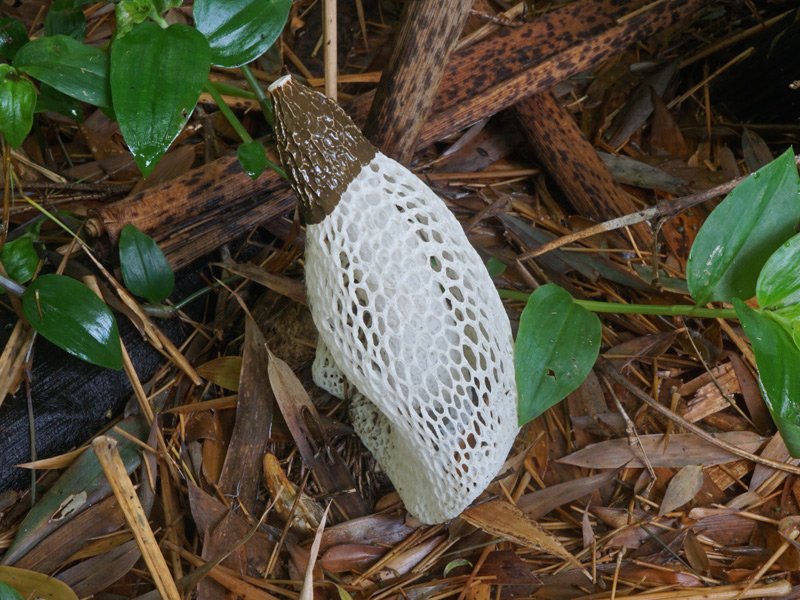
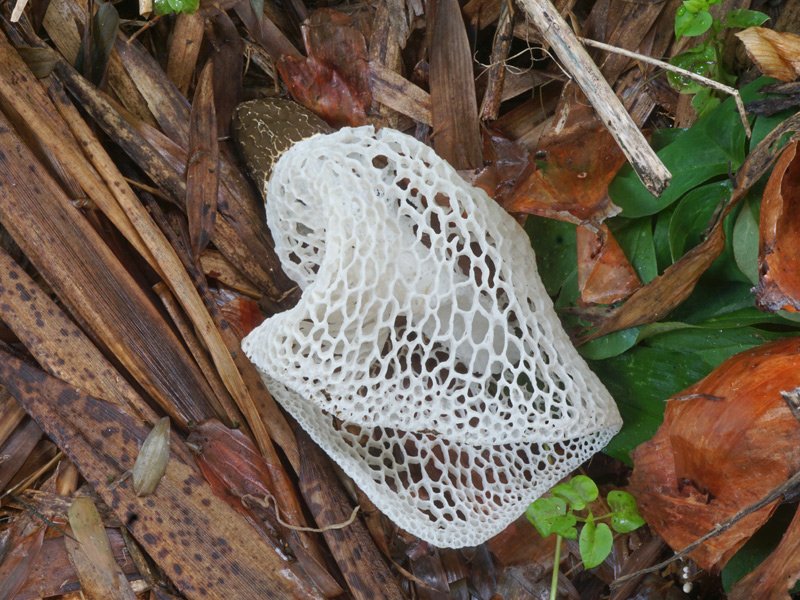
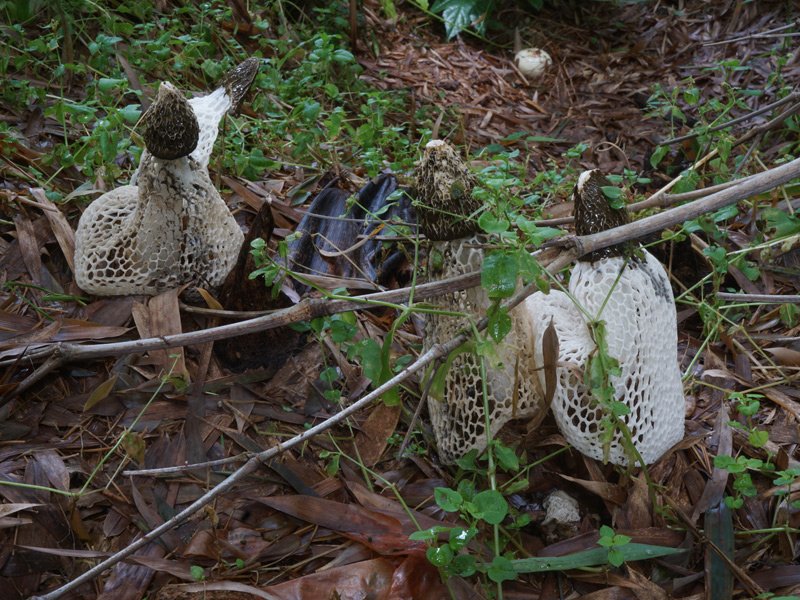
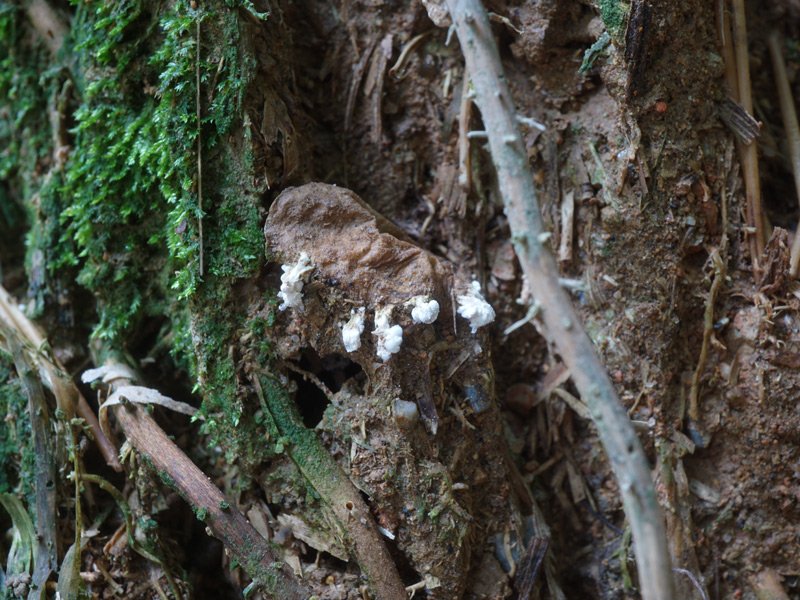
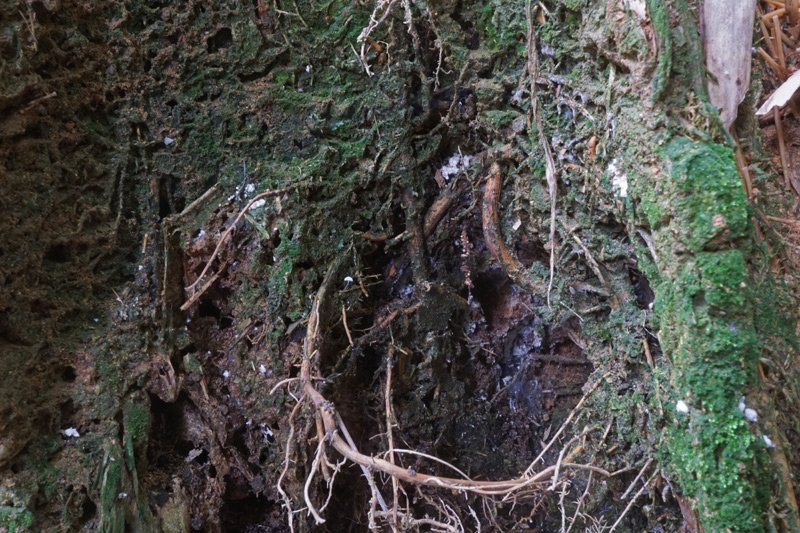
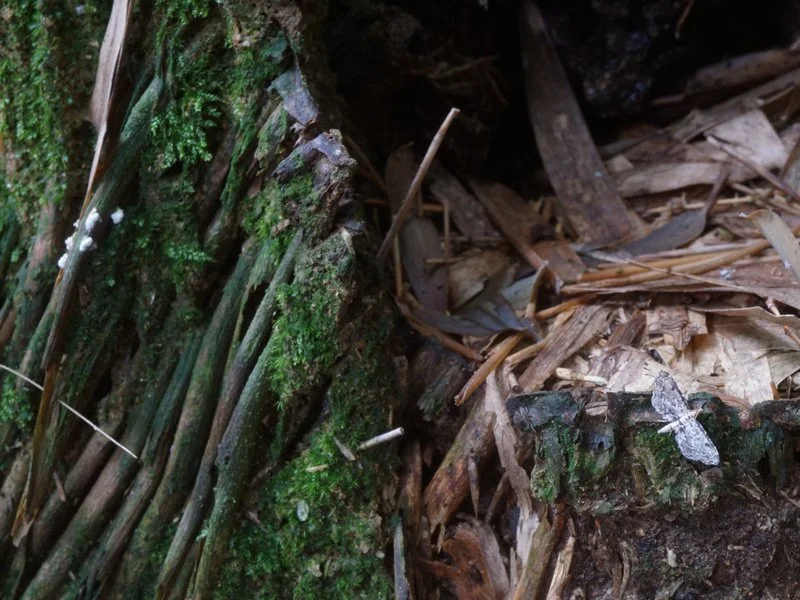
24 June 2025, Kobe
During a break in the rain, I visited a nearby park. I had been checking this spot occasionally since the start of the rainy season but had found no Purpureocillium atypicola (Kumotake). Just as I was about to give up today, I finally came across a single specimen. Amanitas and boletes are also just beginning to emerge.
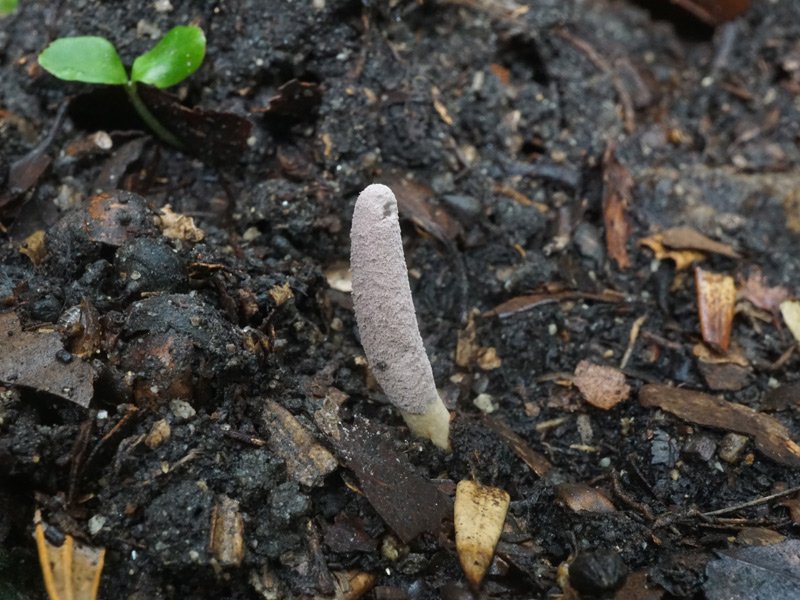
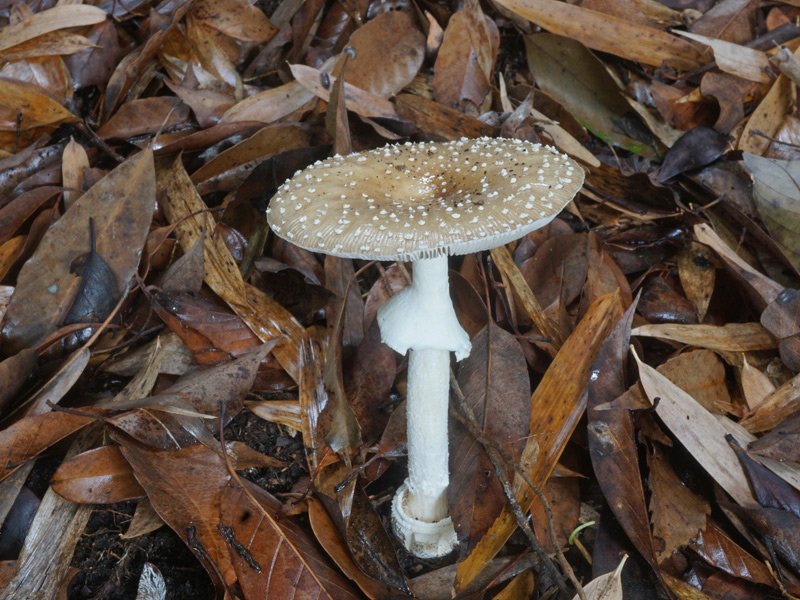
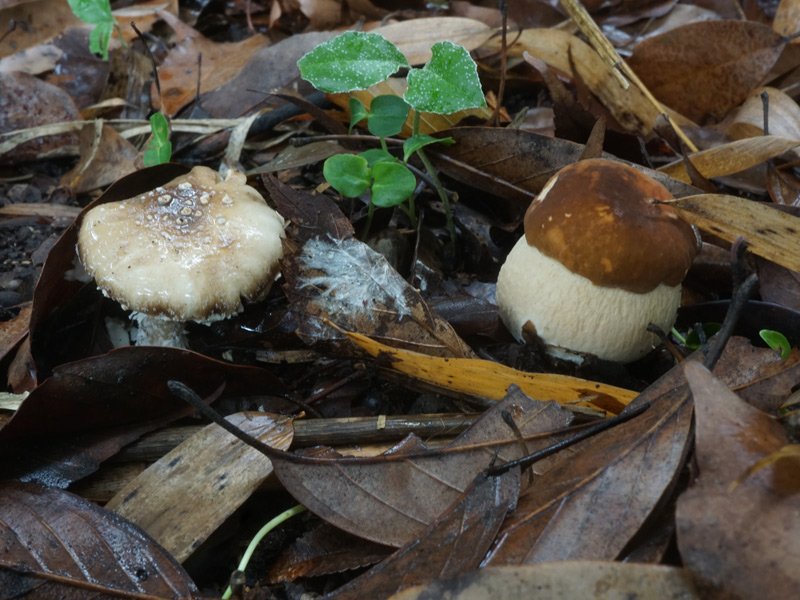
2 June 2025, Kobe
Visited the site known for Ophiocordyceps discoideicapitata. Although the season should be underway, I found only two old specimens and one immature one. It seems this site is not a stable habitat after all, and last year’s emergence was likely an anomaly.
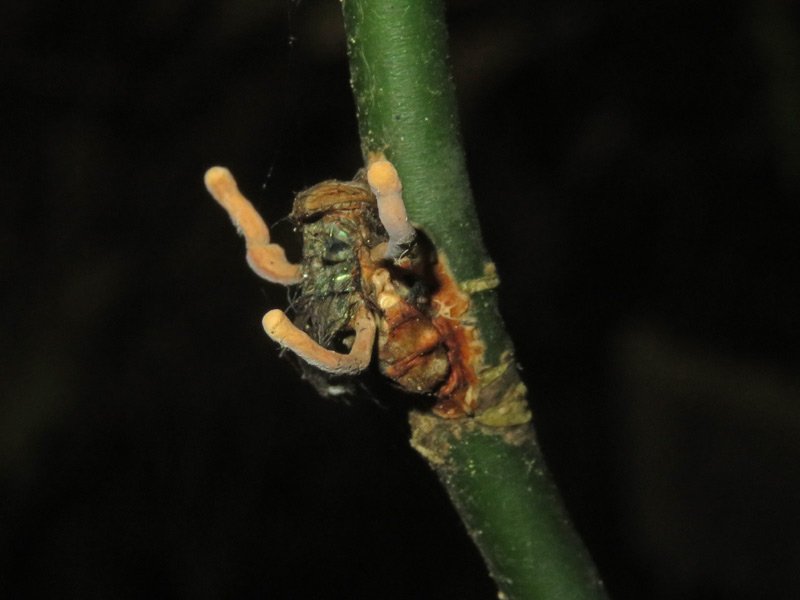
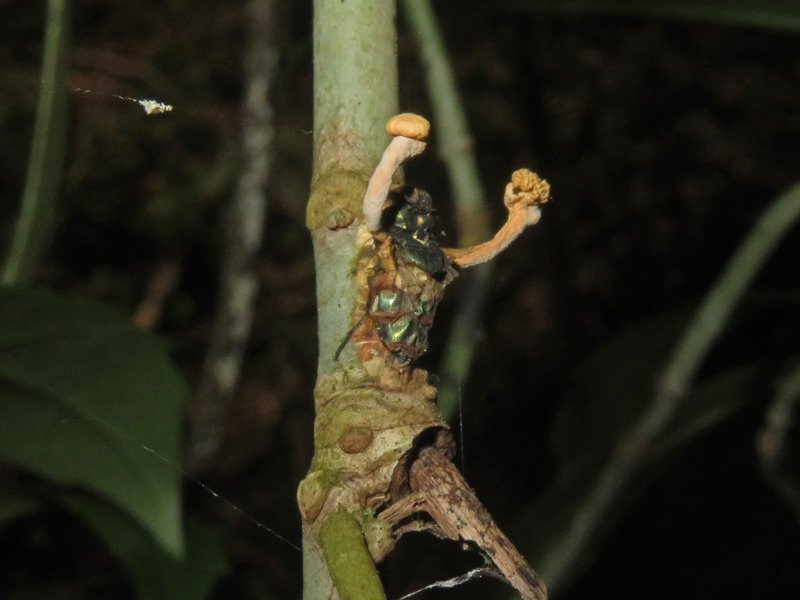
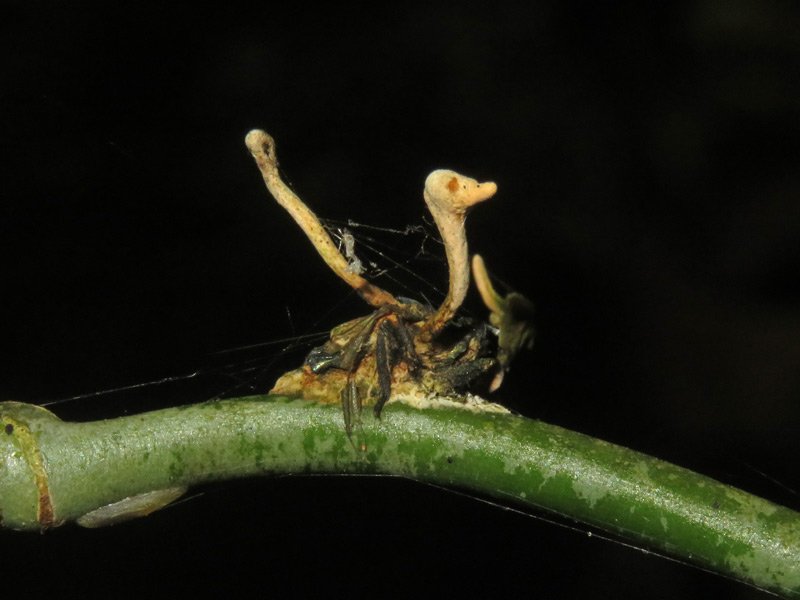
14 May 2025, Nagaokakyo
Returned to Nagaokakyo City after a long time. As expected, several specimens of Scarlet Caterpillarclub (Cordyceps militaris) were present, though the number was not large. I found about six or seven individuals. In addition, I found one specimen of Metacordyceps kusanagiensis and a darkling beetle infected by Cordyceps annullata.
Metacordyceps kusanagiensis is not particularly rare in this area. Over the years, I have discovered several hundred specimens. However, this was the first time I encountered one with such an unusually long stipe. Typically, they are found on bare slopes, but this particular specimen was growing on level ground covered with fallen leaves. This reminded me once again that the form of entomopathogenic fungi is greatly influenced by environmental conditions.

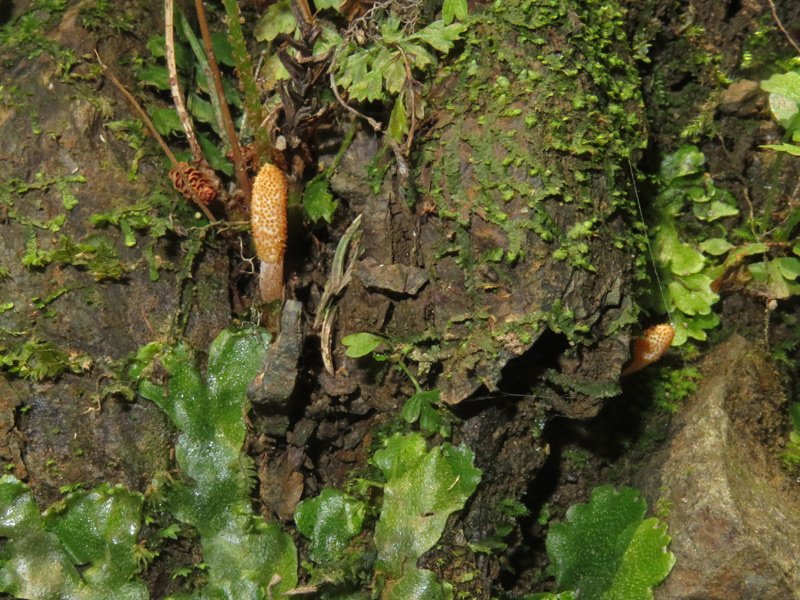





22 April 2025, Kobe
Since anamorphs have recently become a topic of discussion in the entomopathogenic fungi community, here is the anamorph of the Scarlet Caterpillarclub (Cordyceps militaris). When a cleaned specimen is incubated further in a dark chamber, the anamorph emerges. Conidia are produced in mucilaginous masses at the tips of conidiogenous cells resembling those of Verticillium.





3 April 2025, Kobe
Returned to the back side of Mount Rokko after a long time. First, I checked on two specimens of the moth-parasitizing fungus (Ophiocordyceps sphecocephala) that I had found last autumn. They hadn’t changed much, though one showed a slight swelling in the fertile part. Nearby, I discovered a new specimen emerging from a small moth.
Other finds included the Formosan ant fungus (Ophiocordyceps formicarum) and an Aschersonia species infecting the camellia whitefly.
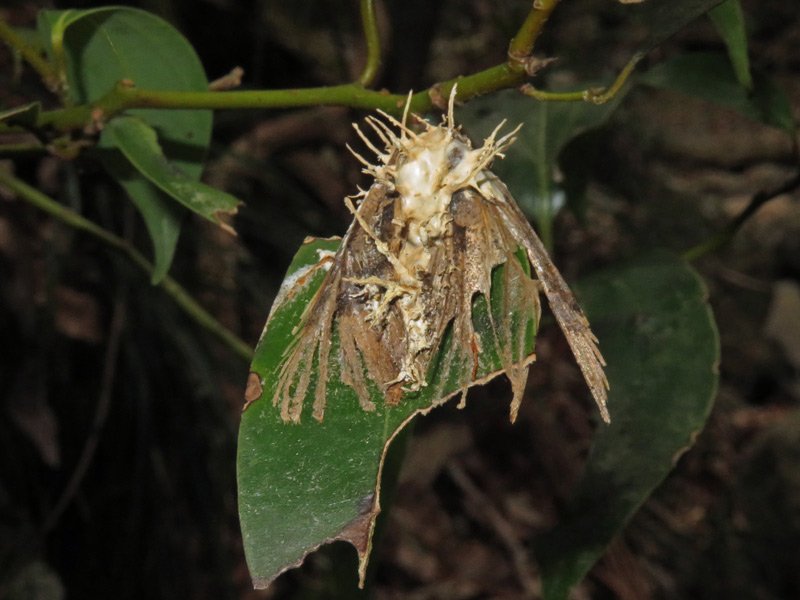






3 January 2025, Kobe
As the mushroom enthusiasts seem to be slowly starting up for the season, I went on my first fungal pilgrimage of the year. I visited the site of the parasitic fungus on giant flies. On both sides of the valley, the flies were attached to the branches of Aucuba japonica. Even at this time of year, some specimens were already fruiting.
I found a few immature ones in the early stages of infection. One of them was astonishing, it turns out the first time I found it was on December 6, 2023, meaning it has been there for over a year.







